Voici le Korg ARP 2600 au NAMM 2020
- 30 réponses
- 21 participants
- 6 231 vues
- 29 followers
delchambre
Khohd (Post Metal / Post Rock)
Vieux machins et autres trucs persos: remix&versions persos - Compos et Compotines AF - Mixages "blues/jazz/rock" - Vidéos kitch
- 1
- 2
korvan
Plaisir d'offrir, joie de recevoir.
Paul Arbert
…
100% U. Bhrngr free • 100% digital
croulebarbe
<<<<<<<< Hú Li >>>>>>>>
delchambre
Korg ARP 2600 FS Semi Modular Analog Synthesizer
Once, and for All The ARP 2600 is brought back to life in a single, one-time-only production run. Now is your opportunity to own one of the most sought after and coveted instruments from the vintage synthesizer era. This limited-edition release includes USB and DIN-style MIDI connections, XLR audio outputs, plus the improved ARP 3620 Duophonic Keyboard with an added arpeggiator / sequencer. Your new ARP 2600 will arrive in a custom-branded hard shell case, complete with casters.
3620 Keyboard
While faithful to the original design, the functionality of the 3620 Keyboard has been greatly enhanced for this limited ARP 2600 release. The 3620 Keyboard contains 49 full-size keys, aftertouch, portamento, and is also duophonic, allowing two keys to be played at once – Single or Multiple Triggering is available. In addition, the duophonic keyboard can use an optional foot switch to lock the interval between any two notes, without retuning the oscillators during performance. Vibrato can be added via a dedicated circuit controlled by aftertouch, or by the onboard LFO (Low Frequency Oscillator), using any of three available waveforms. Most noticeable is the addition of a flexible Arpeggiator that allows a user-defined pattern to be manually sequenced and played back. Still present are the original Pitch Bend knob and the Two Octave Up / Two Octave Down Transpose switch. Connecting the keyboard to the main unit now uses a secure eight-pin din cable.
Processing Powerhouse
The ARP 2600 reveals its modular nature by the unique assortment of valuable, esoteric, and individually patch-able modules it contains. To begin, there are a set of parallel-wired Multiple jacks that enhance the patching possibilities – allowing the same control signal to be sent to multiple locations, for example. Three independent Voltage Processors provide scalable control voltages, or can act to attenuate any control signal. Use the Lag Generator to delay the start of any control signal. The Noise Generator is tunable to deliver White, Pink, and Low-Frequency noise, plus everything in between. A series of three Inverters can reverse the polarity of any signal. The Electronic Switch can be sync’d to either the internal clock or any external clock signal, as can the Sample & Hold rate. Most importantly, the Arp 2600 includes a dedicated Preamp and Envelope Follower for processing an external audio signal.
Specs:
THE TOTAL PACKAGE
More than a synthesizer, the ARP 2600 is a complete sound design studio. Even today, the ARP 2600 stands as a bridge between the individual elements of modular synthesis and the immediacy of a production / performance instrument. Included are an ample supply of oscillators, envelopes, a filter and amplifier – all of the building blocks of analog synthesis. But the ARP 2600 goes even further, with a spring reverb tank and even a pair of monitor speakers. Also present is much of the versatility of a vintage modular system, including a ring modulation, lag and voltage processors, an envelope follower, audio preamp, a clock-able switch, noise source, a sample & hold module, signal inverters, an auxiliary mixer, and even a set of parallel-wired/multi jacks.
NORMALLED PATHWAYS
Nearly every slider and switch on the ARP 2600 front panels is hard wired to specific control source. For example, the front panel controls allow the pitch of Oscillator 1 to be controlled by the keyboard (On/Off switch), the output of the Sample & Hold module (slider), the shape of the ADSR envelope generator (slider), and/or by the sine wave output of Oscillator 2 (slider), and each in varying amounts. These hardwired pathways provide massive amounts of immediate control that make excellent use of all the ARP 2600 has to offer, allowing the ARP 2600 to be played as is – no patching needed. In true modular fashion, inserting a patch cord into the jack associated with any hardwired control overrides that internal connection, letting you create a new signal path of your choosing. As a programming aid, the detailed panel graphics clearly show the available signal routings.
PATCH BAY PRECISION
Unlike earlier modular synthesizers that relied on bulky 6.3mm (1/4") jacks and patch cords, the ARP 2600 uses a more streamlined 3.5mm (1/8”) jack that allows for more patch points to occupy the same amount of panel space, delivering more options and more versatility. Most of the patch points are arranged in a single row below the controls of the individual sound modules. This arrangement keeps the main panel clear and unobstructed for tweaking the controls during performance. Needless to say, these patchable connections and the onboard processors can be used to interact with nearly any modular or Eurorack synthesizer system.
THE OSCILLATORS
ARP Voltage Controlled Oscillators (VCO) are extremely stable in their tuning. All three oscillators feature Initial Tuning and Fine Tuning sliders, and every oscillator can be designated as an LFO (Low Frequency Oscillator) modulating oscillator or as an audio oscillator. (Additional LFO modulation sources are available on the ARP 3620 keyboard; included.) Each oscillator generates multiple wave shapes at once. Available Waves include Sawtooth, Square, Triangle, Sine, and Pulse. The Pulse wave of Oscillator 2 and Oscillator 3 include a manual Pulse Width control, and Pulse Width Modulation is available on Oscillator 2. One audio oscillator can be used to modulate the frequency of another audio oscillator to create analog FM effects.
THE FILTER
The ARP 2600 is equipped with a 4-pole Voltage Controlled Filter (VCF), offering a roll-off curve of -24dB per Octave. As with the oscillators, the ARP 2600 filter also offers a Fine Tuning slider. The addition of Fine Tuning allows precise and useful control of the pitch of a self-resonating filter. The input mixer stage of the VCF includes sliders for each Oscillator, the Noise Generator, and the output of the Ring Modulator. Over time, the ARP 2600 historically went through a number of changes; some were cosmetic, and some were more crucial to the sound. The Filter Type switch selects between a filter response more closely related to either earlier or later models of the ARP 2600.
THE ENVELOPES
Two Envelope Transient Generators (EG) are available on the ARP 2600. The first is a full four-stage Attack, Decay, Sustain, and Release Envelope. The second EG offers variable Attack and Release only. The Manual Start button allows the Envelopes to be retriggered at any time, without using the keyboard. The Envelope module also provides both Gate and Trigger outputs – ideal for patching into another analog modular or Eurorack system.
THE AMPLIFIER
In order to produce and output sound, the ARP 2600 relies on a Voltage Controlled Amplifier (VCA) to bring the output up to a suitable level. The Amplifier features both Linear and Exponential control inputs, and the Initial Gain setting provides continuous output at its highest setting.
OVER AND OUT
Following the VCA, the audio signal of the ARP 2600 passes through the Stereo Mixer section, the internal Spring Reverb tank, and on to the main outputs, the headphone jack, and the internal Left and Right speakers.
PLUG AND PLAY
The ARP 2600 is equipped with two low-impedance XLR outputs (Left and Right) for direct connection to a recording console or sound system – no direct boxes or line-matching transformers are required. A headphone output is also provided. MIDI is transmitted and received via old-school din-style IN, OUT, and THRU jacks, and also via USB. Three foot switch jacks (footswitches sold separately) on the 3620 Keyboard provide hands-free performance control over Portamento (On/Off or Momentary) and the Interval Latch. The front panel offers a Preamp input for processing another audio source.
Khohd (Post Metal / Post Rock)
Vieux machins et autres trucs persos: remix&versions persos - Compos et Compotines AF - Mixages "blues/jazz/rock" - Vidéos kitch
delchambre
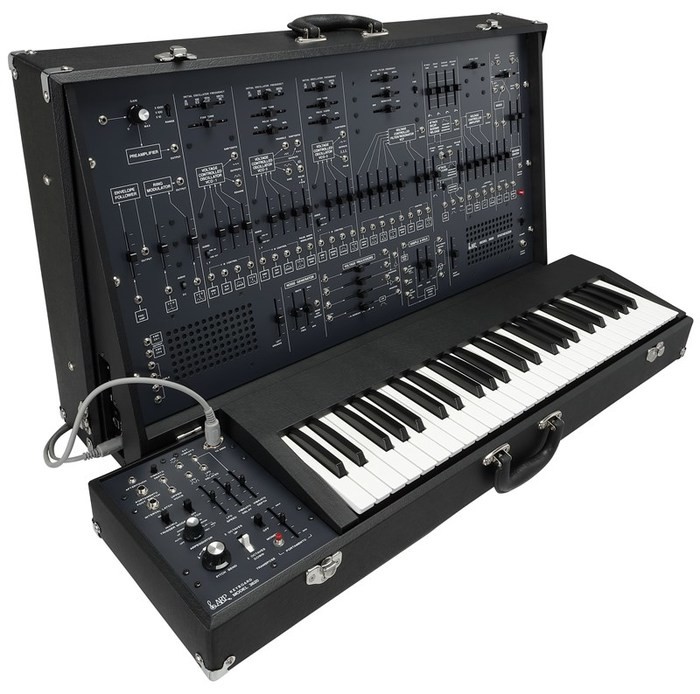
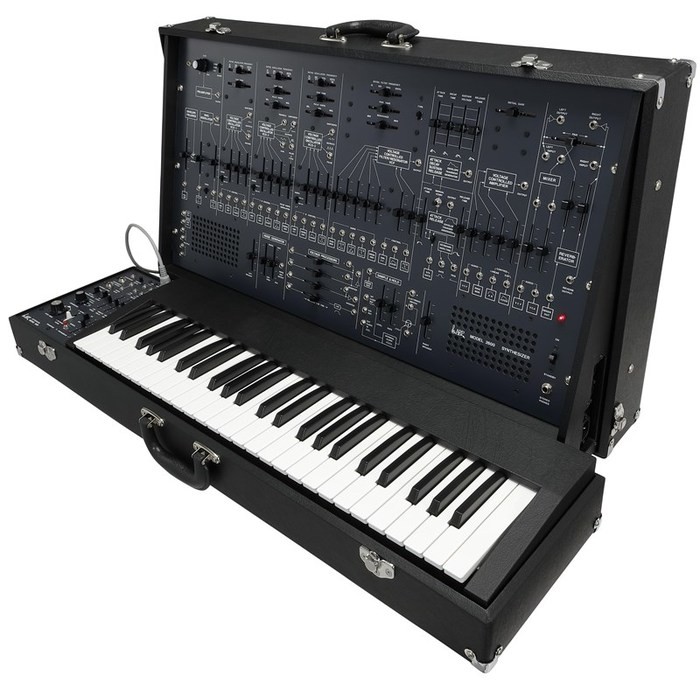
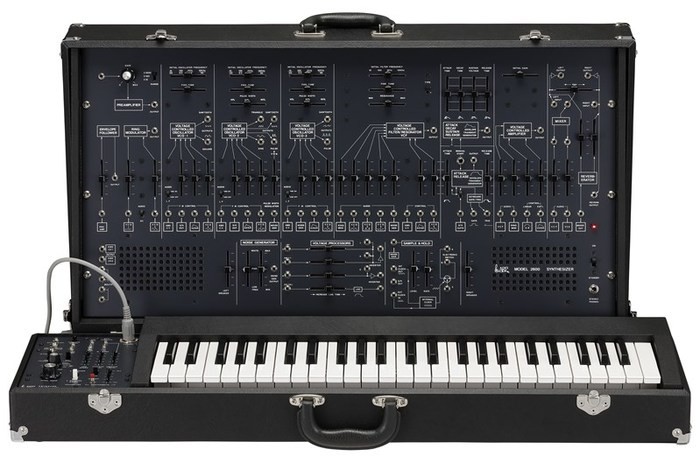

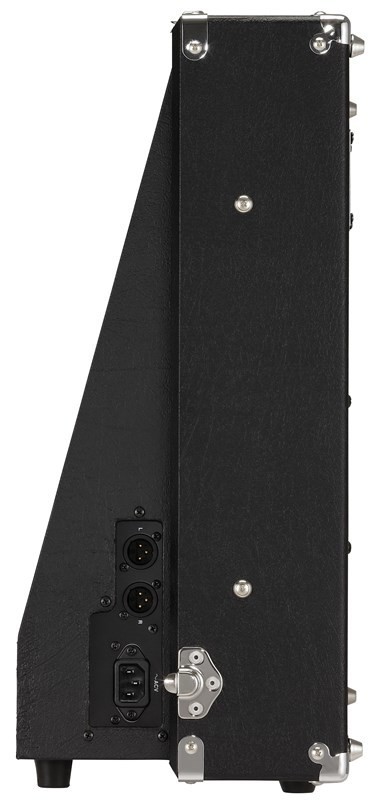
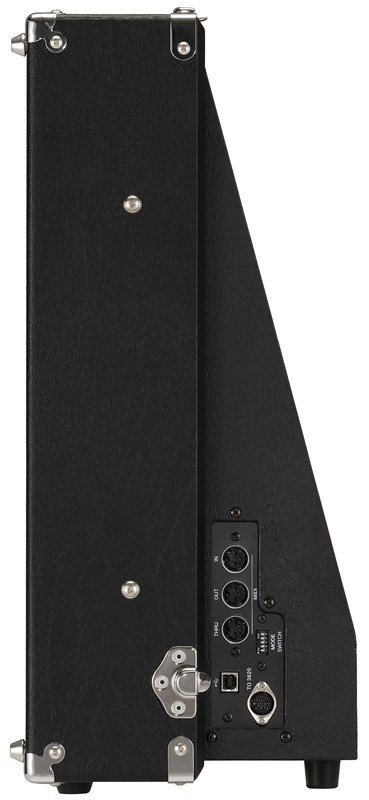
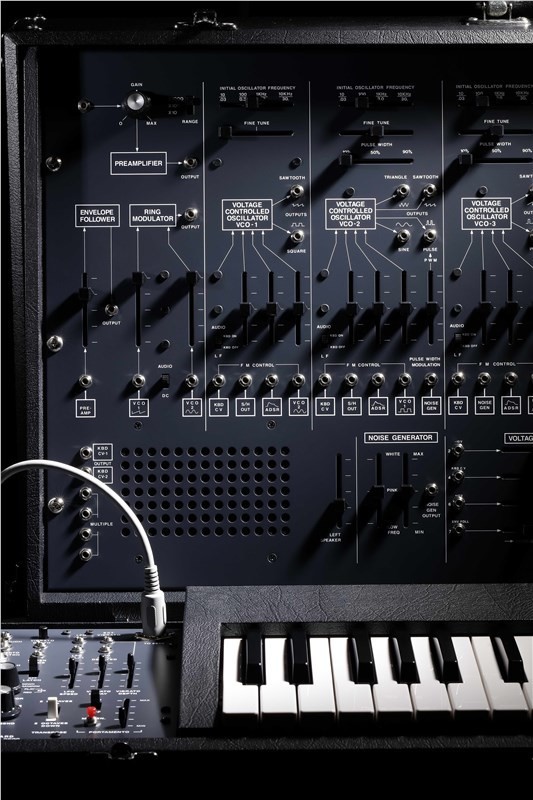
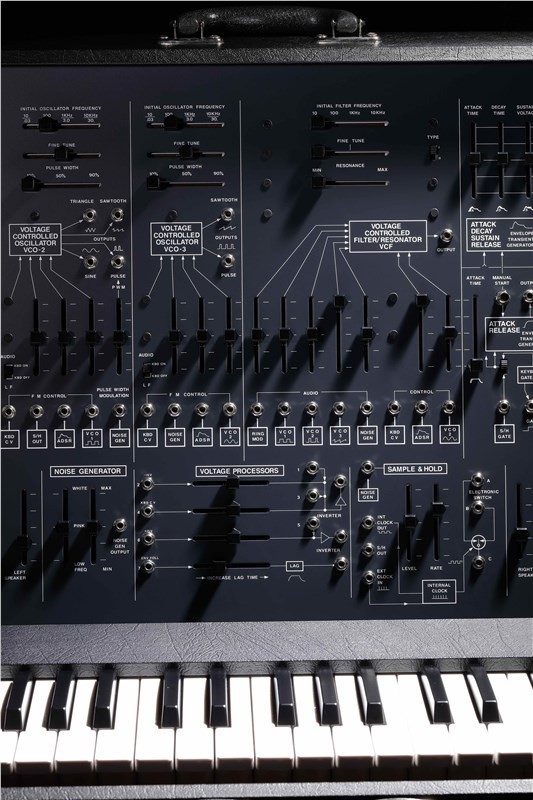
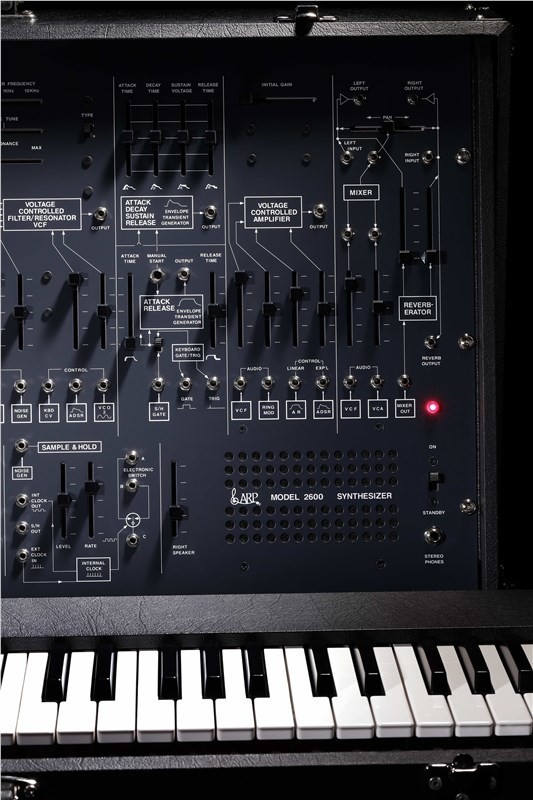
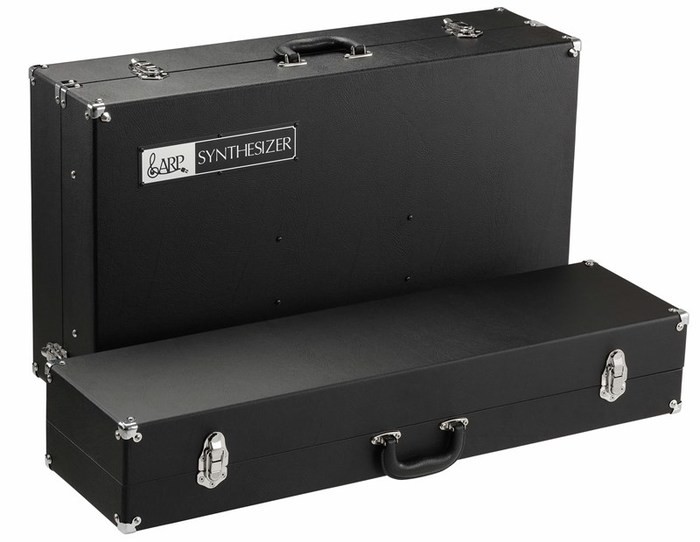
Khohd (Post Metal / Post Rock)
Vieux machins et autres trucs persos: remix&versions persos - Compos et Compotines AF - Mixages "blues/jazz/rock" - Vidéos kitch
Anonyme
Tikky
Kur0
mème pas le temps d'économiser
.Jamais sans mon filtre....
xavierbzh
[ Dernière édition du message le 10/01/2020 à 05:51:34 ]
croulebarbe
<<<<<<<< Hú Li >>>>>>>>
dédé la joncaille
Cependant, j'espère qu'ils sortiront une version mini à 86%, plus facile à intégrer dans un home-studio et du-coup sûrement un peu moins cher. L'original est monstrueusement grand, un vrai veau. J'ai eu la chance de pouvoir en jouer un peu, faut vraiment avoir de la place pour l'intégrer chez soi !
Il existe bien un Odyssey mini et un Odyssey FS, la logique voudrait donc que ce soit aussi le cas avec l'ARP 2600 sinon ils ne l'auraient pas nommé ARP 2600 FS. Là, il sera peut-être mien mais pas le FS, faudrait que j'abatte des murs chez moi pour intégrer un tel monstre ! Tout le monde n'a pas la place de JMJ
jeremy19450
On veut car y a plus ....
Quand on a, c'est trop gros..trop cher trop gris pas assez traversant ... jamais contents ...
une vielle et alors ...??
gouji
Ceci dit j'espère aussi une version "mini" du 2600, pas forcément pour la place mais plus pour le prix et peut être le fait qu'il ne serait pas en édition limité... Car là, malgré le fait qu'il fasse partie de ma sainte trinité, 4000€ c'est pas de ma galaxie
[ Dernière édition du message le 10/01/2020 à 08:55:15 ]
croulebarbe
j'espère qu'ils sortiront une version mini à 86%
Suffi de demander :



<<<<<<<< Hú Li >>>>>>>>
[ Dernière édition du message le 10/01/2020 à 09:00:55 ]
filipvs
Car là, malgré le fait qu'il fasse partie de ma sainte trinité, 4000€ c'est pas de ma galaxie
Arf gouji, y a bien un ou deux instruments dont tu pourrais te séparer de ton joli studio. Et si ça peut te rendre service, je pourrais même te débarrasser de ton superbe clone du Synthi A pour te renflouer en roros
laczko
gouji
Pour le reste de mes pensionnaires, effectivement l'idée m'est venue...mais non, ce que j'ai maintenant reste à la maison. J'ai mis assez de temps comme ça pour regrouper cet assemblage longuement refléchis, ce n'est pas pour tout foutre en l'air au 1er kéké à valise venu
Croulebarbe, c'est quoi ces photos ???
Edit: arf, ce sont juste des 3D...
[ Dernière édition du message le 10/01/2020 à 09:55:45 ]
Organics
La description :
Korg ARP 2600 FS Synthétiseur Analogique Semi Modulaire
Une fois pour toutes L'ARP 2600 reprend vie en un seul cycle de production unique. C'est maintenant l'occasion de posséder l'un des instruments les plus recherchés et les plus convoités de l'ère des synthétiseurs vintage. Cette version en édition limitée comprend des connexions MIDI USB et DIN, des sorties audio XLR, ainsi que le clavier Duophonic ARP 3620 amélioré avec un arpégiateur / séquenceur supplémentaire. Votre nouveau ARP 2600 arrivera dans un étui rigide de marque personnalisée, avec roulettes.
Clavier 3620
Fidèle au design original, la fonctionnalité du clavier 3620 a été considérablement améliorée pour cette version limitée ARP 2600. Le clavier 3620 contient 49 touches de taille normale, l'aftertouch, le portamento et est également duophonique, permettant de jouer deux touches à la fois - un déclenchement simple ou multiple est disponible. De plus, le clavier duophonique peut utiliser un commutateur au pied en option pour verrouiller l'intervalle entre deux notes, sans réaccorder les oscillateurs pendant les performances. Le vibrato peut être ajouté via un circuit dédié contrôlé par l'aftertouch ou par le LFO (oscillateur basse fréquence) intégré, en utilisant l'une des trois formes d'onde disponibles. Le plus notable est l'ajout d'un arpégiateur flexible qui permet à un motif défini par l'utilisateur d'être séquencé et lu manuellement. Le bouton Pitch Bend d'origine et le commutateur Two Octave Up / Two Octave Down Transpose sont toujours présents. La connexion du clavier à l'unité principale utilise désormais un câble DIN à huit broches sécurisé.
Centrale de traitement
L'ARP 2600 révèle sa nature modulaire par l'assortiment unique de modules précieux, ésotériques et individuellement modifiables qu'il contient. Pour commencer, il existe un ensemble de prises multiples câblées en parallèle qui améliorent les possibilités de correction - permettant par exemple d'envoyer le même signal de contrôle à plusieurs emplacements. Trois processeurs de tension indépendants fournissent des tensions de commande évolutives ou peuvent agir pour atténuer tout signal de commande. Utilisez le générateur de retard pour retarder le début de tout signal de commande. Le générateur de bruit est réglable pour délivrer du bruit blanc, rose et basse fréquence, ainsi que tout le reste. Une série de trois onduleurs peut inverser la polarité de n'importe quel signal. Le commutateur électronique peut être synchronisé avec l’horloge interne ou tout autre signal d’horloge externe, tout comme le taux d’échantillonnage et de maintien. Plus important encore, l'Arp 2600 comprend un préampli et un suiveur d'enveloppe dédiés pour le traitement d'un signal audio externe.
Spécifications:
LE FORFAIT TOTAL
Plus qu'un synthétiseur, l'ARP 2600 est un studio de conception sonore complet. Aujourd'hui encore, l'ARP 2600 constitue un pont entre les éléments individuels de la synthèse modulaire et l'immédiateté d'un instrument de production / performance. Inclus sont une vaste offre d'oscillateurs, d'enveloppes, un filtre et un amplificateur - tous les éléments constitutifs de la synthèse analogique. Mais l'ARP 2600 va encore plus loin, avec un réservoir de réverbération à ressort et même une paire de haut-parleurs de contrôle. La polyvalence d'un système modulaire vintage est également présente, notamment une modulation en anneau, des processeurs de décalage et de tension, un suiveur d'enveloppe, un préampli audio, un commutateur pouvant être synchronisé, une source de bruit, un module d'échantillonnage et de maintien, des inverseurs de signal, un auxiliaire table de mixage, et même un ensemble de prises parallèles / multi-câblées.
VOIES NORMALISÉES
Presque tous les curseurs et interrupteurs des panneaux avant de l'ARP 2600 sont câblés à une source de contrôle spécifique. Par exemple, les commandes du panneau avant permettent de contrôler la hauteur de l'oscillateur 1 par le clavier (interrupteur On / Off), la sortie du module Sample & Hold (curseur), la forme du générateur d'enveloppe ADSR (curseur) et / ou par la sortie d'onde sinusoïdale de l'oscillateur 2 (curseur), et chacune en quantités variables. Ces voies câblées fournissent des quantités massives de contrôle immédiat qui font un excellent usage de tout ce que l'ARP 2600 a à offrir, permettant à l'ARP 2600 d'être joué tel quel - aucun patch n'est nécessaire. De façon modulaire, l'insertion d'un cordon de raccordement dans la prise associée à toute commande câblée remplace cette connexion interne, vous permettant de créer un nouveau chemin de signal de votre choix. Comme aide à la programmation, les graphiques détaillés du panneau montrent clairement les routages de signaux disponibles.
PRECISION DE PATCH BAY
Contrairement aux synthétiseurs modulaires antérieurs qui reposaient sur des prises et des cordons de raccordement volumineux de 6,3 mm (1/4 "), l'ARP 2600 utilise une prise de 3,5 mm (1/8") plus rationalisée qui permet à plus de points de raccordement d'occuper la même quantité de panneau espace, offrant plus d'options et plus de polyvalence. La plupart des points de patch sont disposés sur une seule rangée sous les commandes des modules de son individuels. Cette disposition maintient le panneau principal clair et dégagé pour peaufiner les commandes pendant les performances. Inutile de dire que ces les connexions patchables et les processeurs embarqués peuvent être utilisés pour interagir avec presque n'importe quel système modulaire ou synthétiseur Eurorack.
LES OSCILLATEURS
Les oscillateurs contrôlés en tension ARP (VCO) sont extrêmement stables dans leur réglage. Les trois oscillateurs disposent de curseurs de réglage initial et de réglage fin, et chaque 'oscillateur peut être désigné comme oscillateur modulant LFO (oscillateur basse fréquence) ou comme oscillateur audio. (Des sources de modulation LFO supplémentaires sont disponibles sur le clavier ARP 3620; incluses.) Chaque oscillateur génère plusieurs formes d'onde à la fois. Les ondes disponibles incluent Sawtooth, Square, Triangle, Sine et Pulse. L'onde d'impulsion de l'oscillateur 2 et de l'oscillateur 3 comprend un contrôle manuel de la largeur d'impulsion, et la modulation de la largeur d'impulsion est disponible sur l'oscillateur 2. Un oscillateur audio peut être utilisé pour moduler la fréquence d'un autre oscillateur audio pour créer des effets FM analogiques.
LE FILTRE
L'ARP 2600 est équipé d'un filtre à tension contrôlée à 4 pôles (VCF), offrant une courbe de coupure de -24 dB par octave. Comme pour les oscillateurs, le filtre ARP 2600 propose également un curseur de réglage fin. L'ajout de Fine Tuning permet un contrôle précis et utile de la hauteur d'un filtre auto-résonnant. L'étage de mixage d'entrée du VCF comprend des curseurs pour chaque oscillateur, le générateur de bruit et la sortie du Ring Modulator. Au fil du temps, l'ARP 2600 a historiquement subi un certain nombre de changements; certains étaient cosmétiques, et certains étaient plus cruciaux pour le son. Le commutateur Filter Type sélectionne entre une réponse de filtre plus étroitement liée aux modèles antérieurs ou ultérieurs de l'ARP 2600.
LES ENVELOPPES
Deux générateurs de transitoires d'enveloppe (EG) sont disponibles sur l'ARP 2600. Le premier est une enveloppe d'attaque, de décroissance, de maintien et de libération à quatre niveaux. Le deuxième EG ne propose que des attaques et relâches variables. Le bouton Démarrage manuel permet de redéclencher les enveloppes à tout moment, sans utiliser le clavier. Le module Envelope fournit également des sorties Gate et Trigger - idéales pour patcher dans un autre système analogique modulaire ou Eurorack.
L'AMPLIFICATEUR
Afin de produire et de produire du son, l'ARP 2600 s'appuie sur un amplificateur commandé en tension (VCA) pour porter la sortie à un niveau approprié. L'amplificateur dispose d'entrées de contrôle linéaires et exponentielles, et le réglage du gain initial fournit une sortie continue à son réglage le plus élevé.
PLUS ET PLUS
Après le VCA, le signal audio de l'ARP 2600 passe par la section Mixer stéréo, le réservoir interne de réverbération à ressort, et vers les sorties principales, la prise casque et les haut-parleurs internes gauche et droit.
BRANCHER ET UTILISER
L'ARP 2600 est équipé de deux sorties XLR basse impédance (gauche et droite) pour une connexion directe à une console d'enregistrement ou à un système audio - aucun boîtier direct ni transformateur d'adaptation de ligne n'est requis. Une sortie casque est également fournie. Le MIDI est transmis et reçu via les prises IN, OUT et THRU de style din à l'ancienne, ainsi que via USB. Trois prises de commutateur au pied (commutateurs au pied vendus séparément) sur le clavier 3620 offrent un contrôle des performances mains libres sur Portamento (marche / arrêt ou momentané) et le verrouillage d'intervalle. Le panneau avant offre une entrée de préampli pour traiter une autre source audio.
https://www.tindie.com/products/hotchk155/case-for-arpie/
lambretta usefull annex agency
https://yaboon.com/movie/276/2001_a_space_odyssey
https://yaboon.com/movie/37746/a_merry_friggin_christmas
[ Dernière édition du message le 10/01/2020 à 14:04:44 ]
jeremy19450
une vielle et alors ...??
delchambre
Khohd (Post Metal / Post Rock)
Vieux machins et autres trucs persos: remix&versions persos - Compos et Compotines AF - Mixages "blues/jazz/rock" - Vidéos kitch
lukimpro
Tout est relatif!
A l'époque le 2600 coutait 4 fois un Odyssey ?
[ Dernière édition du message le 11/01/2020 à 00:08:34 ]
Kur0
.Jamais sans mon filtre....
tordure
http://www.crazy-patroche.com/article-clonage-du-arp-2600-120886590.html
tordure
- < Liste des sujets
- Charte
- 1
- 2
